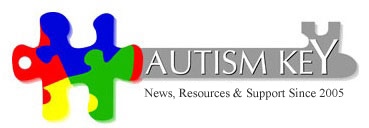Safe Chemicals Act Takes Aim at Environmental Toxins
Very recently, the “Safe Chemicals Act” was introduced by senators Frank Lautenberg, Barbara Boxer, Amy Klobuchar, Charles Schumer and others to upgrade America’s antiquated system for managing chemical safety. This is in response to increasingly forceful warnings from the scientific and medical
communities that common chemicals in household products are linked to diseases such as cancer, learning
disabilities and infertility.
From an autism standpoint, Lee Grossman, Autism Society President and CEO states that, “Thousands of unchecked toxins in the American marketplace are highly detrimental to the 1.5 million Americans living with autism today because many have immune deficiencies that, when exposed to certain substances, complicate already existing health issues.”
The Senate’s Safe Chemicals Act builds on momentum from 18 states that have already passed laws to address health hazards from chemicals and numerous corporate policies of major American companies restricting toxic chemicals, including Staples, SC Johnson, Wal-Mart and Kaiser Permanente. Those states are Wyoming, Nevada, Utah, Colorado, Arizona, New Mexico, Nebraska, Kansas, Oklahoma, Missouri, Arkansas, Louisiana, Alabama, West Virginia, Virginia, North
Carolina and Indiana.
The Safe Chemicals Act would overhaul the failing 35-year-old Toxic Substances Control Act (TSCA). Enacted in 1976, TSCA presumed that chemicals should be considered innocent until proven guilty, a sharp departure from the approach taken with pharmaceuticals and pesticides. Since then, that presumption has been proven faulty and dangerous, as numerous scientific studies have proven that many common chemicals can cause or exacerbate chronic diseases and can be toxic even at low doses.
Specifically, the new Safe Chemicals Act would:
• Require EPA to identify and restrict the “worst of the worst” chemicals, those that persist and build up in the food chain;
• Require basic health and safety information for all chemicals as a condition for entering or remaining on the market;
• Reduce the burden of toxic chemical exposures on people of color and low-income and indigenous communities;
• Upgrade scientific methods for testing and evaluating chemicals to reflect best practices called for by the National Academy of Sciences; and
• Generally provide EPA with the tools and resources it needs to identify and address chemicals posing health and environmental concerns.
If you want to “go green” in buying cleaners, be aware that specific claims such as chlorine-free, fragrance free, and phosphate-free are more meaningful than general claims such as “organic” and
“natural." Look for certification from credible third parties such as Cradle to Cradle, the EPA’s Design for the Environment Program, or Green Seal.
To make your own safe and economical cleaners consult a website such as: https://www.natural-healthy-home-cleaning-tips.com/index.htm
Here is a great guide to less toxic products: https://www.lesstoxicguide.ca/
And if you want to extend that safety zone into your yard, go to: https://www.safegardening.co.uk/GardeningWithoutPesticides.html
It’s about time this issue is addressed legislatively, but we don’t have to wait to act as individuals. Ridding toxic chemicals from our homes and yards is an empowering way to make our world safer for our children with autism.

